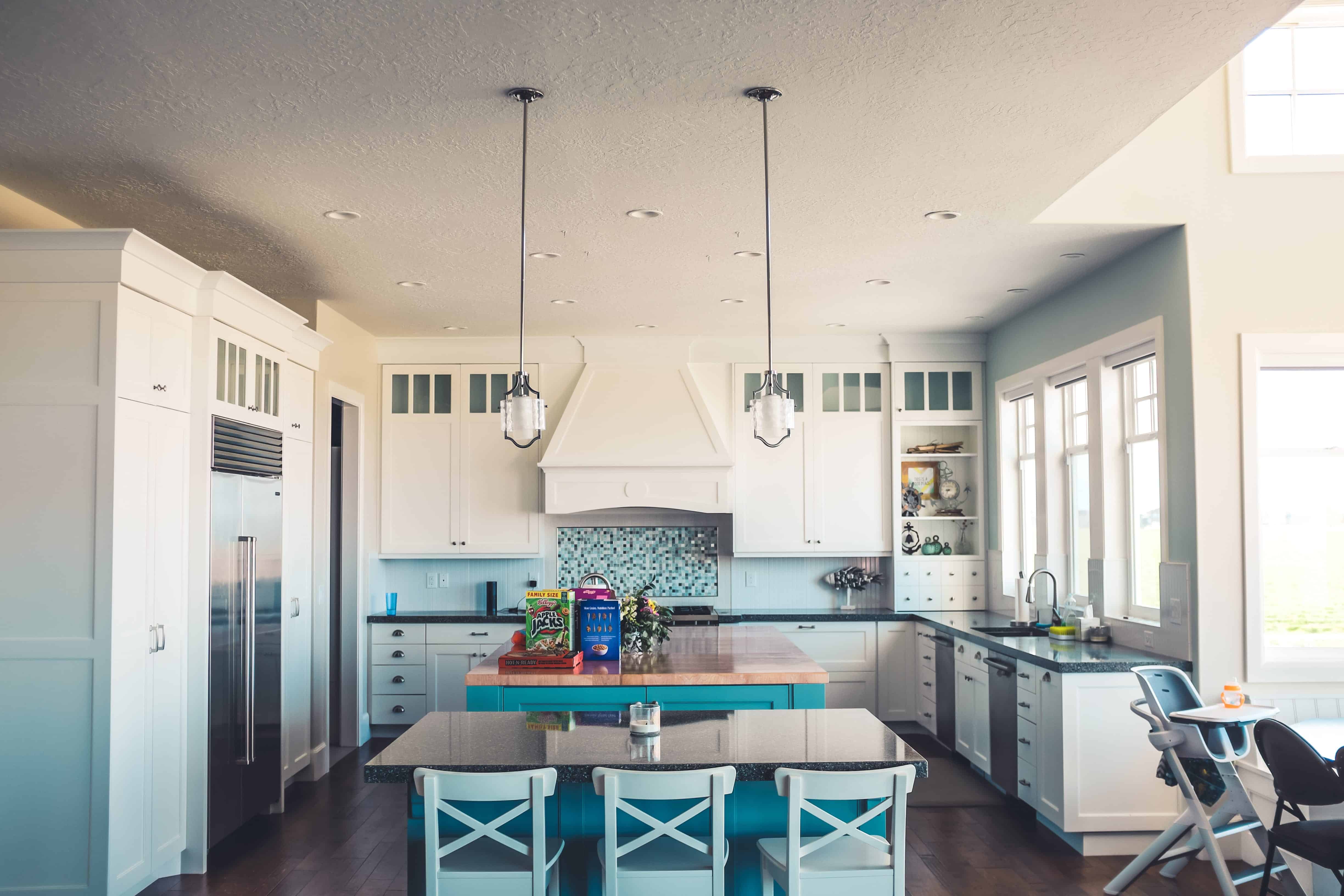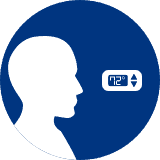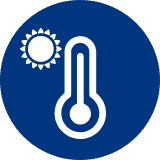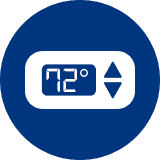In my job, I tend to have plenty of conversations with homeowners about energy efficiency. Energy efficient windows, energy efficient thermostats, energy efficient HVAC units, and energy efficient insulation: people in Northern California love to talk about these things. But, they mostly like to talk about them all individually. A much rarer conversation is the one that we really should be having: the conversation about a whole house approach to energy efficiency.
A whole house approach to energy efficiency checklist takes into account all the various ways that these seemingly separate pieces are connected to each other to form a whole picture of earth and power bill-friendly steps we can take as homeowners, and how to coordinate them to maximize a home’s energy efficiency.
Simply put, any step toward energy efficiency is generally a good one, but the smartest move is to take a whole house approach; getting all the singular measures to work in tandem can help you reach levels of efficiency you didn’t think possible. With that in mind, here’s a helpful checklist that can become a vital part of your home efficiency process.
A California Homeowner’s Whole House Approach to Energy Efficiency Checklist
- Step #1: Find a baseline of minimum energy consumption to aim for.
-
Step #2: Identify even small areas of energy inefficiency or waste.
-
Step #3: Seal leaks around doors and windows, and in HVAC ductwork.
-
Step #4: Upgrade, or install new, insulation to walls, attics, and other vulnerable areas of your home.
-
Step #5: Invest in an energy efficient HVAC system, including a smart thermostat.
-
Step #6: Replace single pane or outdated windows with double pane options.
Step #1 Towards Energy Efficiency: Find a Baseline
 Find your home’s energy consumption baseline, also known as the minimum energy demand (including both power and gas). A good way to find this baseline is to take your bills from throughout the year and find the months in which they are lowest. Then, aim to have every monthly bill be that low. It’s a great baseline to start with, although once you really start to enhance your energy efficiency, you may want to start aiming even lower.
Find your home’s energy consumption baseline, also known as the minimum energy demand (including both power and gas). A good way to find this baseline is to take your bills from throughout the year and find the months in which they are lowest. Then, aim to have every monthly bill be that low. It’s a great baseline to start with, although once you really start to enhance your energy efficiency, you may want to start aiming even lower.
Whole House Approach Checklist Step #2: Identify Inefficiency and Waste
 There are small ways you can reduce your current energy usage and demand, including making sure you have energy efficient light bulbs, unplugging major appliances when they’re not in use, and making a concentrated effort to use some appliances less often.
There are small ways you can reduce your current energy usage and demand, including making sure you have energy efficient light bulbs, unplugging major appliances when they’re not in use, and making a concentrated effort to use some appliances less often.
Here’s a guide on energy audits from the Department of Energy. The best way to find out what you need to do for your own home, though, is to consult with a heating and cooling service professional who has experience in a number of related areas, such as HVAC systems, insulation, plumbing, and windows.
Whole House Approach to Energy Efficiency Step #3: Seal Leaks
 Due to the complex laws of air pressure, the cool air conditioned by your AC wants to go outside during the summer, where the warm air is, while the cool air that’s outside during the winter is forever trying to push into your heated home. That’s physics for you. Unfortunately, it also means that if there are leaks around your doors and windows, or even in the ductwork in your attic and walls, the conditioned air produced by your HVAC unit will escape, meaning that the system will then have to run harder and longer, burning more power, to keep the inside of your home comfortable.
Due to the complex laws of air pressure, the cool air conditioned by your AC wants to go outside during the summer, where the warm air is, while the cool air that’s outside during the winter is forever trying to push into your heated home. That’s physics for you. Unfortunately, it also means that if there are leaks around your doors and windows, or even in the ductwork in your attic and walls, the conditioned air produced by your HVAC unit will escape, meaning that the system will then have to run harder and longer, burning more power, to keep the inside of your home comfortable.
For more on this, I recently shared three tips on how to lower your electric bills, and sealing leaky ducts was number one. A trained HVAC pro can help find hard to identify leaks in your ducts, and a trained window pro can help you seal your doors and windows against energy inefficiencies.
Energy Efficient Home Checklist Step #4: Add or Upgrade Insulation
 Simply put, insulation supports the energy efficiency of the rest of your HVAC system. Without insulation, the air that your HVAC system warms and cools is far more likely to leak outside, which means you have to burn more energy to replace it. Walls and ceilings are two of the biggest areas for hot and cold air loss, depending on the season. Adding or upgrading insulation in these areas is no small task, and I’d highly recommend bringing in a professional, but getting this work done is definitely worthwhile. A good insulation job can reduce the cost of heating and cooling by a whopping 40%. I recently talked about the benefits and advantages of summer insulation, and this advice applies to winter too.
Simply put, insulation supports the energy efficiency of the rest of your HVAC system. Without insulation, the air that your HVAC system warms and cools is far more likely to leak outside, which means you have to burn more energy to replace it. Walls and ceilings are two of the biggest areas for hot and cold air loss, depending on the season. Adding or upgrading insulation in these areas is no small task, and I’d highly recommend bringing in a professional, but getting this work done is definitely worthwhile. A good insulation job can reduce the cost of heating and cooling by a whopping 40%. I recently talked about the benefits and advantages of summer insulation, and this advice applies to winter too.
Whole House Approach Energy Efficiency Checklist Step #5: Invest in a Modern HVAC System
 When was the last time you got your HVAC system replaced? If you can’t remember, or if the answer is anywhere near double digits, it may be time for a new, more efficient unit. The average HVAC system’s lifespan is between 10 and 15 years. Recently, though, I’ve been suggesting that homeowners air on the side of having it fixed earlier rather than later since new technology like smart thermostats can save so much energy that they make the early investment worth it. The U.S. Department of Energy estimates that a programmable or smart thermostat can save the average homeowner about $180 a year in heating and cooling costs.
When was the last time you got your HVAC system replaced? If you can’t remember, or if the answer is anywhere near double digits, it may be time for a new, more efficient unit. The average HVAC system’s lifespan is between 10 and 15 years. Recently, though, I’ve been suggesting that homeowners air on the side of having it fixed earlier rather than later since new technology like smart thermostats can save so much energy that they make the early investment worth it. The U.S. Department of Energy estimates that a programmable or smart thermostat can save the average homeowner about $180 a year in heating and cooling costs.
Energy Efficiency Checklist Step #6: Have Your Windows Professionally Replaced
 Windows are such a great investment when it comes to a whole house approach to energy efficiency. In fact, the U.S. Department of Energy reports that investing in energy efficient windows can reduce heating and cooling costs by about $500 annually, and that’s a national total that may be even higher here in Northern California where warm temperatures require above average AC use in the summer. New windows can also add value to your house by increasing its aesthetic appeal. I suggest working with a window installation professional to learn more about the options that fit the unique needs of your home.
Windows are such a great investment when it comes to a whole house approach to energy efficiency. In fact, the U.S. Department of Energy reports that investing in energy efficient windows can reduce heating and cooling costs by about $500 annually, and that’s a national total that may be even higher here in Northern California where warm temperatures require above average AC use in the summer. New windows can also add value to your house by increasing its aesthetic appeal. I suggest working with a window installation professional to learn more about the options that fit the unique needs of your home.
Any one of these energy efficiency upgrades will save you a bit of money by itself, but if you work with an experienced professional who can coordinate them so they’re all working in tandem, you can not only reach the baseline we set way back in step number one, but you can easily surpass it.
When you combine sealed windows, doors, and ducts with a smart thermostat, insulation, and energy efficient windows, you won’t have to run your AC or heater very much at all. The warm or cool air your HVAC system generates will hang out so long, you might get tired of being so comfortable and having energy bills that are so low. Wait, that’s silly, there’s not a person alive who’d get tired of that.
Learn more about how our HVAC, window, and plumbing experts can help you take a whole house approach to energy efficiency. Contact the experienced professionals at Bell Brothers today.
Image courtesy Unsplash user NeONBRAND

